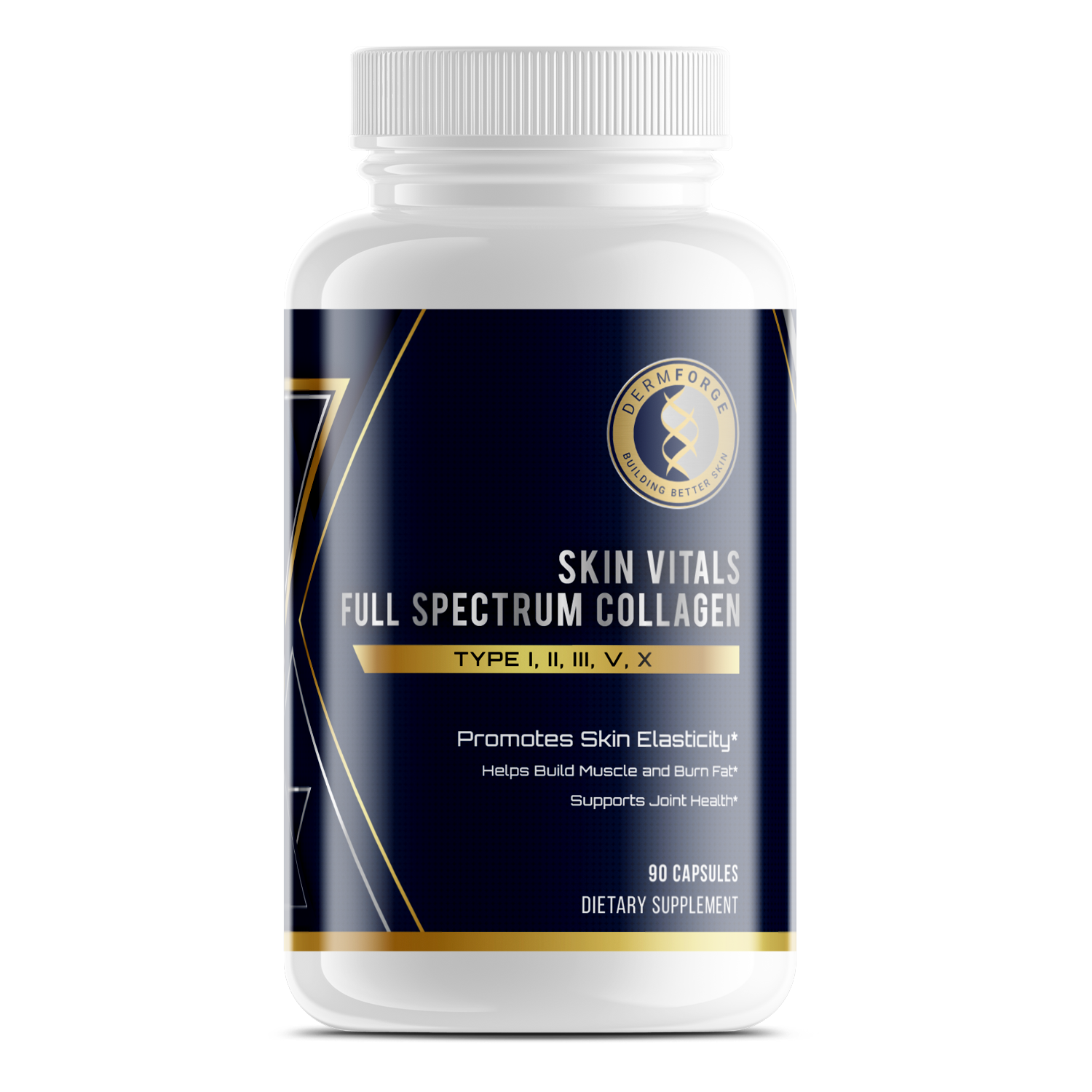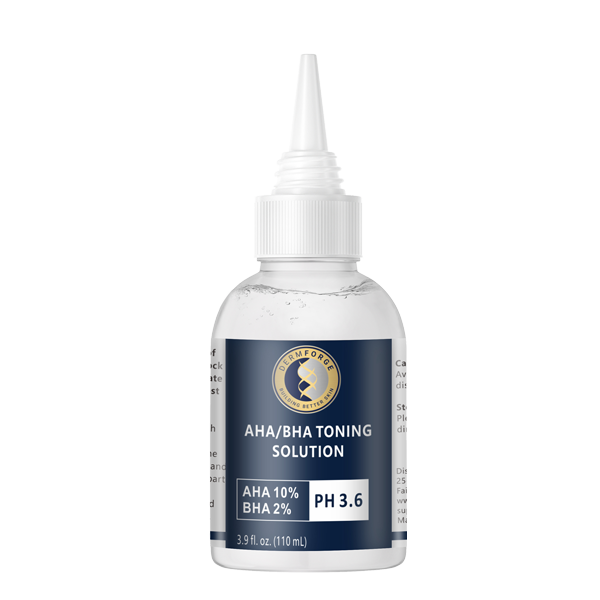Skin pigmentation disorders can often be confusing, especially when differentiating between melasma and hyperpigmentation. In this article, we will delve into the details of each condition, explore their causes, symptoms, and solutions, and highlight the key differences between them. Additionally, we will provide prevention strategies to help minimize the occurrence of these pigmentation disorders.
Defining Skin Pigmentation
Skin pigmentation refers to the color of the skin, which is determined by the production of melanin. Melanin is a pigment produced by specialized skin cells called melanocytes. It protects the skin from the harmful effects of the sun's ultraviolet (UV) rays.
Understanding skin pigmentation involves delving into the intricate processes within the skin. Melanin production is a complex biological mechanism finely regulated by various factors to ensure the skin's protection and health.
The Role of Melanin in Skin Pigmentation
Melanin plays a crucial role in determining skin color. It absorbs UV radiation, preventing it from damaging the DNA within skin cells. Genetic factors, sun exposure, hormonal changes, and certain medical conditions influence the amount and distribution of melanin in the skin.
Furthermore, melanin is responsible for skin color and plays a role in wound healing and inflammation regulation. Research has shown that melanin can act as an antioxidant, scavenging free radicals that can cause cellular damage and premature aging.
Understanding Melasma
Melasma is a common skin condition characterized by dark patches on the face, most commonly seen on the forehead, cheeks, nose, and upper lip. While the exact cause of melasma is not fully understood, it is believed to be triggered by hormonal changes, particularly during pregnancy, as well as by sun exposure and genetic predisposition.
Research suggests that hormonal fluctuations, such as those experienced during pregnancy or while taking hormonal contraceptives, can stimulate the overproduction of melanin in the skin. This excess melanin leads to the formation of the characteristic dark patches associated with melasma. Furthermore, exposure to the sun’s UV radiation can exacerbate melasma by increasing melanin production and darkening existing patches.
Identifying Symptoms of Melasma
The primary symptom of melasma is the appearance of dark, irregularly shaped patches on the skin. These patches are usually brown or gray and can vary in size. Melasma is typically more prevalent in women than in men, with the majority of cases occurring during pregnancy or while taking oral contraceptives.
In addition to the visible dark patches, individuals with melasma may also experience a heightened sensitivity to sunlight and an increased risk of developing post-inflammatory hyperpigmentation. These secondary symptoms can further impact the appearance and texture of the skin, leading to additional concerns for those affected by melasma.
Treatment Options for Melasma
Several treatment options are available for melasma. These include topical creams containing ingredients like hydroquinone, retinoids, or corticosteroids, which can help lighten the skin and reduce pigmentation. Chemical peels, microdermabrasion, and laser therapy also treat melasma by exfoliating the top layers of skin and stimulating collagen production.
In some cases, combination therapies involving topical treatments and in-office procedures may be recommended to achieve optimal results. Individuals with melasma should consult with a dermatologist or skincare specialist to determine the most suitable treatment plan based on their unique skin type, medical history, and lifestyle factors.
Understanding Hyperpigmentation
Hyperpigmentation refers to excessive melanin production, resulting in darkened patches or spots on the skin. It can be caused by various factors, such as sun exposure, acne, hormonal changes, inflammation, and certain medications or medical conditions. Sun exposure is a key trigger for hyperpigmentation, as UV rays stimulate melanocytes to produce more melanin.
Acne is another common trigger for hyperpigmentation. When the skin experiences inflammation due to acne breakouts, it can lead to an overproduction of melanin in the affected areas, resulting in dark spots known as post-inflammatory hyperpigmentation (PIH). This type of hyperpigmentation can be particularly challenging to treat and may require a combination of topical treatments and professional procedures for effective results.
Recognizing Signs of Hyperpigmentation
Hyperpigmentation can manifest as freckles, age spots, or post-inflammatory hyperpigmentation (PIH) caused by acne or other skin injuries. These darkened patches typically appear on sun-exposed areas of the body, such as the face, hands, arms, and shoulders. It is important to note that hyperpigmentation can affect individuals of all skin types and ethnicities.
In addition to the common types of hyperpigmentation mentioned, there are other more specific conditions such as melasma, characterized by larger, symmetrical patches of hyperpigmentation on the face. Melasma is often triggered by hormonal changes, such as pregnancy or birth control use, and requires specialized treatment approaches to effectively manage the condition and prevent recurrence.
Effective Remedies for Hyperpigmentation
Several effective remedies for hyperpigmentation can lighten the darkened areas and even out the skin tone. These include topical creams containing ingredients like hydroquinone, kojic acid, or vitamin C, which inhibit melanin production. Chemical peels, microdermabrasion, and laser treatments can also help to reduce hyperpigmentation by exfoliating the skin and promoting cell turnover.
In addition to these treatments, incorporating a daily sunscreen with high SPF is crucial in preventing further darkening of hyperpigmented areas and protecting the skin from UV-induced damage. Consistent skin care routines that focus on gentle exfoliation and hydration can also support the overall health and appearance of the skin, aiding in the management of hyperpigmentation over time.
Melasma and Hyperpigmentation: A Comparative Analysis
Both melasma and hyperpigmentation involve excessive melanin production, resulting in dark patches or spots on the skin. Melanin is a pigment produced by melanocytes in the skin in response to UV exposure, hormonal changes, or inflammation.
When melanin is overproduced, it can lead to hyperpigmentation, which manifests as areas of skin darker than the surrounding tissue. Both conditions can be triggered by sun exposure and hormonal changes. They can also be treated using topical creams containing ingredients like hydroquinone, retinoids, or vitamin C, as well as procedures such as chemical peels or laser therapy to reduce pigmentation.
It is important to note that both melasma and hyperpigmentation can significantly impact an individual's self-esteem and quality of life. The visible nature of these skin conditions can lead to feelings of self-consciousness and may cause individuals to seek treatment options to improve the appearance of their skin.
Consulting with a dermatologist or skincare specialist is crucial in developing a personalized treatment plan that addresses the underlying causes of hyperpigmentation and helps restore a more even skin tone.
Key Differences Between Melasma and Hyperpigmentation
While melasma and hyperpigmentation share similarities, there are key differences between the two conditions. Melasma is more common in women, especially during pregnancy or while taking hormonal contraceptives. Hormonal fluctuations, such as those experienced during pregnancy or when using birth control pills, can trigger the development of melasma due to the increased production of estrogen and progesterone.
Melasma often presents as symmetrical patches on the face, particularly on the cheeks, forehead, nose, or upper lip. On the other hand, hyperpigmentation can affect individuals of any gender and age group and can appear on various areas of the body, not just the face. Hyperpigmentation can be caused by acne scarring, skin injuries, or inflammatory conditions like eczema or psoriasis.
Prevention Strategies for Skin Pigmentation Disorders
It is important to adopt certain lifestyle changes to prevent melasma and hyperpigmentation. These include wearing broad-spectrum sunscreen with a minimum SPF of 30, avoiding excessive sun exposure, wearing protective clothing and hats, and seeking shade during peak sun hours. Also, managing hormonal changes, such as during pregnancy or menopause, may help prevent melasma.
Furthermore, maintaining a well-balanced diet rich in antioxidants and vitamins can also contribute to skin health and help prevent pigmentation issues. Foods like berries, leafy greens, and citrus fruits are known for their skin-brightening properties. Staying hydrated by drinking adequate water each day is essential for overall skin health and can aid in reducing the appearance of dark spots.

Skincare Products to Minimize Pigmentation Issues
Incorporating skincare products into your routine can help minimize pigmentation issues. Look for products containing ingredients like vitamin C, niacinamide, retinol, and antioxidants, which can help brighten the skin and reduce the appearance of dark spots. Regular exfoliation can also promote cell turnover and improve overall skin tone.
Moreover, incorporating a gentle cleanser and moisturizer suitable for your skin type is crucial in maintaining a healthy skin barrier, which can help prevent pigmentation disorders. Sunscreen should be applied as the final step in your skincare routine every morning, even on cloudy days, to protect the skin from harmful UV rays that can exacerbate pigmentation issues.
Conclusion
Melasma and hyperpigmentation are two distinct skin pigmentation disorders that are often misunderstood. While they share similarities regarding excessive melanin production and treatment options, their causes, symptoms, and prevalence differ. By understanding the differences between melasma and hyperpigmentation and implementing prevention strategies, individuals can effectively manage these conditions and achieve a more even skin tone.
Are you looking to address pigmentation concerns? Explore DermForge's website to discover products to help balance your skin tone, including our Skin Bright Glutathione Complex. Take the first step today and embark on your path to radiant skin.






